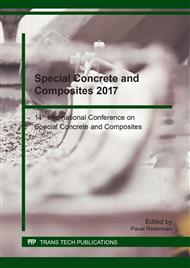p.102
p.108
p.114
p.119
p.127
p.132
p.141
p.147
p.152
Porous Structure and Hygric Properties of Concrete for Radioactive Waste Repositories
Abstract:
The paper presents the evaluation of the influence of supplementary materials on the porous structure and hygric properties of concrete for waste repositories. The used supplementary materials were natural zeolite, brick dust and metashale. Studied parameters were basic physical properties, distribution curves of pores obtained by mercury intrusion porosimetry and water absorption coefficient. Obtained results revealed worse behaviour of natural zeolite compared to brick dust and metashale, as there was significant rise in open porosities when higher amount of the material was added as well as rise in absorption coefficient.
Info:
Periodical:
Pages:
127-131
Citation:
Online since:
January 2018
Price:
Сopyright:
© 2018 Trans Tech Publications Ltd. All Rights Reserved
Share:
Citation:


